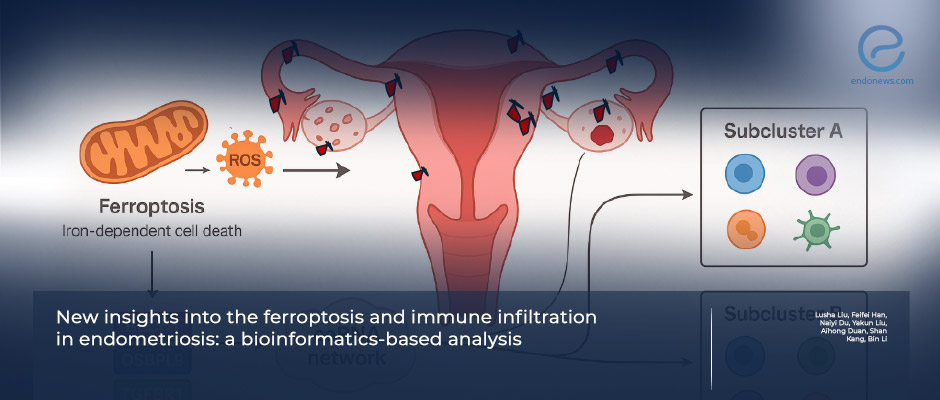Ferroptosis: A New Mechanism Potentially Driving Endometriosis Progression
Apr 10, 2025
Ferroptosis may contribute to endometriosis progression through immune microenvironment remodeling.
Key Points
Highlights:
- Ferroptosis may contribute to the development and progression of endometriosis.
Importance:
- This study enhances the understanding of endometriosis pathogenesis and highlights ferroptosis as a potential therapeutic target.
What’s done here:
- Researchers integrated transcriptomic data from the Gene Expression Omnibus (GEO) and ferroptosis-related genes from FerrDb.
- THey explored the role of ferroptosis in endometriosis and its immune microenvironment.
Key results:
- Ten hub ferroptosis-related genes that could predict the diagnosis of endometriosis were identified.
- Two ferroptosis-based subclusters, significantly associated with endometriosis stage and immune profile are detected.
Limitations:
More research is needed to:
- Verify the role and mechanisms of the hub ferropsis-related genes in endometriosis.
- Confirm the interaction between ferroptosis and immune cells in endometriosis.
Lay Summary
A recent study published in Frontiers in Immunology suggests that ferroptosis, a form of iron-dependent cell death, may play a role in the progression of endometriosis by altering the immune microenvironment. This discovery offers new insights into how the disease develops and points to potential directions for future treatments.
To explore the connection between ferroptosis and endometriosis, a research team led by Dr. Bin Li from the Department of Gynecology at Handan Central Hospital in China analyzed gene expression data from the Gene Expression Omnibus (GEO) and ferroptosis-related genes from the FerrDb database.
The researchers identified 2 ferroptosis modules of endometriosis. Enrichment analysis showed that these were closely linked to autophagy, mammalian target of rapamycin (mTOR), a protein kinase that maintains cellular homeostasis, oxidative stress, and the FOXO pathway, a cell signaling pathway that regulates cellular functions of proliferation as well as cellular growth.
Finally, the team identified ten hub ferroptosis-related genes that could predict the diagnosis of endometriosis. Then, based on four of these genes, namely BECN1, OSBPL9, TGFBR1, and GSK3B, they developed a competing endogenous RNA network.
They identified two ferroptosis subclusters of endometriosis and showed that these were closely linked to the stage of endometriosis and that immune checkpoint genes were expressed at significantly different levels in the two subclusters, with the cluster with stage III-IV endometriosis being more prone to the immunosuppressive microenvironment.
“Taken together, our study provides valuable information for understanding ferroptosis and immunity of [endometriosis], and lays a theoretical foundation for subsequent research,” the authors concluded.
Ferroptosis is a cell death mechanism dependent on iron, which is known to be associated with several diseases, including cancer and inflammatory diseases.
Research Source: https://pubmed.ncbi.nlm.nih.gov/39872538/
ferroptosis endometriosis stage immunity

